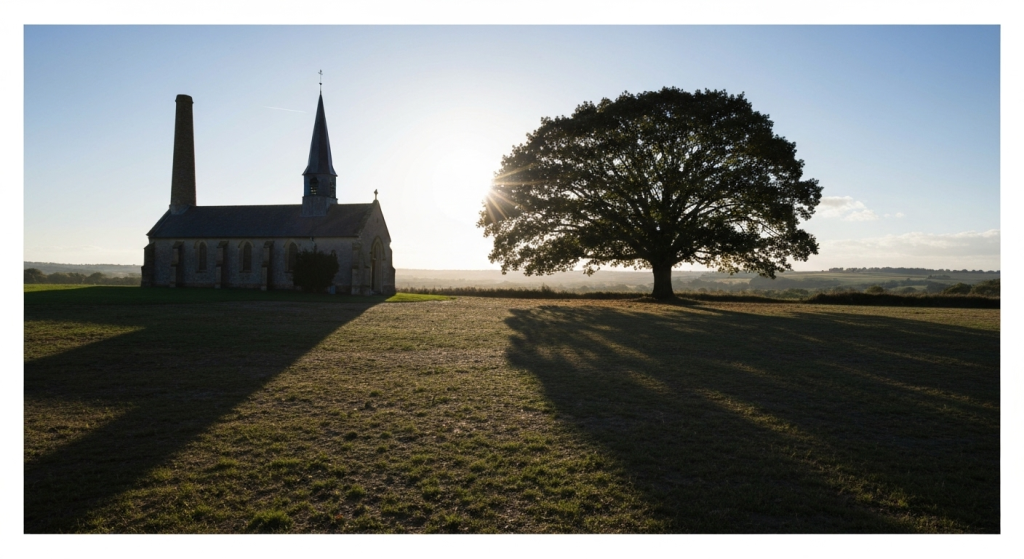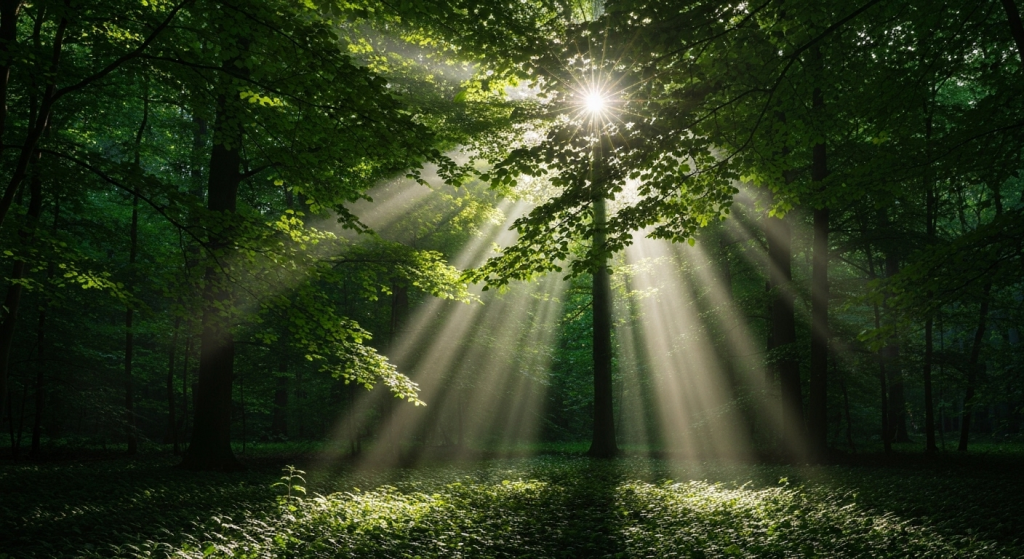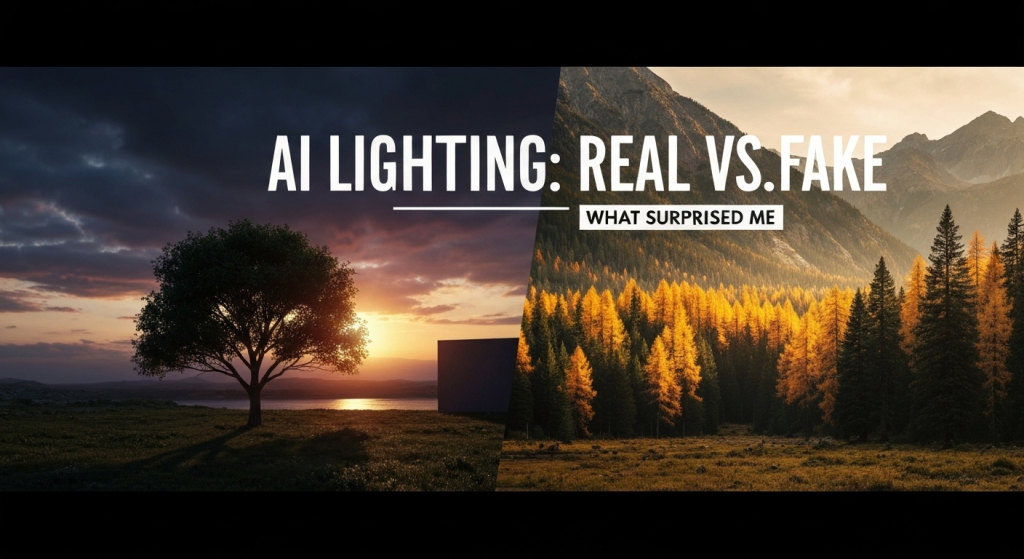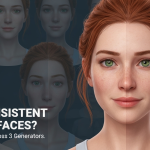AI landscape generators feel like magic. With a few words, you can conjure a sprawling mountain range, a quiet forest path, or a dramatic coastal sunset. As someone who loves both nature and technology, I’ve spent countless hours creating and comparing these digital worlds. At first, the results are stunning. But for anyone who has really looked at a landscape—artists, photographers, or nature lovers—something often feels “off.”
After hundreds of experiments, I’ve learned that the biggest giveaway isn’t the shape of the trees or the texture of the rocks. It’s the light. Light has rules. It follows the laws of physics. And while AI is an amazing mimic, it hasn’t quite learned the physics. This article explores what surprised me about AI lighting—what it gets right, what it gets bafflingly wrong, and what it teaches us about the limits of realism.
As an author, I (Mahnoor Farooq) have been exploring and writing about creative AI tools for years. My fascination isn’t just with the technology itself, but with how it tries to understand and replicate our world. This work involves constant experimentation, comparing AI-generated images to real-world photography and art. I’m driven by a deep curiosity to see where the digital “brushstrokes” fail and where they succeed. My goal is to share these findings clearly, helping other enthusiasts understand both the power and the current quirks of these amazing tools.
The Uncanny Valley of AI Light

You’ve probably heard of the “uncanny valley.” It’s that feeling of unease when a robot or animation looks almost human, but not quite. I’ve found there’s a similar effect in AI landscapes, and it’s almost always caused by light. The image isn’t bad. The colors are beautiful. But the scene feels wrong.
In my early tests, I would ask for a simple “sunny day in a field.” The AI would deliver a bright, green field and a blue sky. But the shadows from the trees would be soft and diffused, as if it were an overcast day. Or a bright sun would be in the sky, but the side of a building facing it would be in shadow. This conflict between the light source and its effect is what breaks the illusion. For an enthusiast, this disconnect is jarring. It pulls you out of the experience.
What AI Landscape Generators Get Surprisingly Right
To be fair, these tools have learned a lot from the billions of photos they’ve been trained on. In some areas, their understanding of light is fantastic. It’s important to know what they’re good at.
Golden Hour and Sunsets
This is where AI generators truly shine. Why? Because their training data is flooded with sunset photos. Everyone loves to take them. The AI has learned the vibe of a sunset perfectly.
It knows that “golden hour” means warm, soft light. It understands that “sunset” involves a palette of oranges, pinks, and purples. It will often add a beautiful, subtle lens flare or make the light rays look hazy. When I type “epic sunset over a quiet lake,” the result is almost always emotionally powerful. The AI nails the color and mood, which is often what the user wants.
Diffuse Overcast Lighting
This is the “easy mode” for digital lighting, and AI knows it. On a cloudy, overcast day, the light is diffuse. The clouds act like a giant softbox, scattering sunlight in every direction.
This means:
- No hard shadows: All shadows are very soft and faint.
- Low contrast: The difference between light and dark areas is minimal.
- Muted colors: Colors appear less vibrant than in direct sun.
AI generators often default to this lighting when the prompt is vague. It’s safe. It’s hard to get wrong because there are no complex shadows to calculate. This is why many AI-generated scenes have a “dreamy” or “moody” feel. The AI is playing to its strengths.
Basic Atmospheric Perspective
Here’s another subtle effect AI does well. Atmospheric perspective is the rule that objects farther away appear hazier, less detailed, and bluer. This is because you are looking through more “atmosphere” (dust, water vapor) between you and the object.
AI understands this pattern. If you generate a “vast mountain range,” it will correctly make the closest mountains dark and detailed, the middle ones a bit lighter and bluer, and the farthest ones faint, blue outlines. This simple trick adds a credible and often beautiful sense of depth to its landscapes.
Where the Illusion Breaks: My Lighting Critique
Here’s the thing. While AI is great at mimicking the look of light, it doesn’t understand the why. It’s a pattern-matcher, not a physicist. And this is where the surprising, reality-breaking errors happen. I’ve run into three major problems time and time again.
The “One Sun” Problem: Inconsistent Shadows
This is the most common and obvious failure. Our solar system has one sun. On a clear day, this single light source means all shadows must be cast in the same direction, running parallel to each other.
- My AI Experience: I’ve generated countless scenes that defy this basic rule. I’ll prompt for a “village square at 4 PM.” The AI will create a beautiful scene. But the shadow from the church steeple goes to the left, while the shadow from a nearby tree goes to the right. A bench might have no shadow at all.
- What This Means: The AI is building the image in pieces. It knows “church” and “tree” and “bench” and “shadow” are related concepts. It pulls a “church with a shadow” and a “tree with a shadow” from its memory and sticks them together, without a central 3D “sun” to tell all the shadows where to go. This creates a confusing scene with multiple, impossible light sources.
Reflections That Don’t Reflect
Water is a mirror. It reflects the sky. A bright, colorful sunset must create an equally bright, colorful reflection. The light, color, and shapes should match. AI struggles with this concept.
- My AI Experience: The AI understands that water is “blue” and that it “reflects things.” But it fails the specifics. I’ll get a stunning, fiery orange sunset, but the lake below it will be a dull, default blue. Or, it will reflect a mountain, but the reflection will be warped or show a part of the mountain that isn’t even facing the water.
- The Breakdown: The AI isn’t calculating the angle of reflection. It’s just painting a “water texture” onto the ground plane and adding some “reflection-like” blobs.
Here is a simple breakdown of the differences I’ve observed:
| Feature | Real-World Reflection | Common AI-Generated Reflection |
| Color Source | Accurately mirrors the exact colors of the sky and objects. | Often uses a default “blue” or “gray” water color, ignoring the sky. |
| Light | The reflection of the sun or bright sky is just as bright as the source. | The reflection is usually much duller than the sky. |
| Shapes | Objects are distorted by waves but are geometrically correct. | Shapes can be warped, missing, or “blob-like” abstractions. |
| Physics | Follows the rule: the angle of incidence equals the angle of reflection. | Follows a learned “pattern” of what reflections should look like, ignoring physics. |
Subsurface Scattering: The Missing Glow

This is a more advanced lighting effect, but its absence is what makes many AI images feel “dead” or “plastic.” Subsurface scattering (SSS) is what happens when light enters a translucent object (not transparent, not opaque), bounces around inside, and exits at a different point.
Think of a leaf in the sun. It doesn’t just reflect green light. The sunlight enters the leaf, illuminates it from the inside, and makes it glow a vibrant, almost electric yellow-green. This happens with grapes, thin clouds, marble, wax, and human skin.
- My AI Experience: AI almost never gets this right. I’ll prompt for “sunlight streaming through forest leaves.” The AI will paint sunbeams hitting the ground, but the leaves themselves will remain a dark, solid green. In reality, those backlit leaves should be the brightest things in the image. This lack of SSS makes objects feel solid, flat, and unnatural.
Learning the Limits: AI Is an Artist, Not a Physicist
So why do these errors happen? The “surprise” for me was realizing the type of technology we’re using. Most popular AI image generators (like DALL-E, Midjourney, and Stable Diffusion) are diffusion models.
Here’s the simple version: these models are trained on billions of 2D images. They learn patterns. They know “sun” is associated with “bright” and “shadow.” They know “tree” is “green” and “brown.”
But they are not 3D rendering engines. They are not simulating a 3D world, placing a light source, and then calculating the path of every light ray. They are just masters of texture and collage. They are “painting” a scene based on all the other scenes they’ve ever seen. This is why the AI is a fantastic artist for creating a mood, but a poor engineer for creating a physically accurate reality.
This key difference is the limit of our current realism. As an enthusiast, this discovery was freeing. It’s not a “flaw” so much as a characteristic of the tool. For more on the technical side of how these models work, NVIDIA has a great technical blog. (https://blogs.nvidia.com/blog/what-is-diffusion-model/)
This leads to a clear set of trade-offs for nature and art enthusiasts.
Pros and Cons of AI Lighting
- Pros:
- Incredible for capturing a specific mood, atmosphere, or color palette.
- Excellent for generating “impossible” or dreamlike scenes that defy physics on purpose.
- A powerful tool for concept art and brainstorming different lighting scenarios quickly.
- Cons:
- Often breaks fundamental laws of light, which shatters realism.
- Struggles with complex light interactions like reflections, caustics (light patterns in water), and subsurface scattering.
- Can create visually confusing images with inconsistent shadows or light sources.
How to “Fix” AI Lighting: Tips for Artists and Enthusiasts
Just because the AI makes mistakes doesn’t mean we’re stuck with them. As I’ve worked with these tools, I’ve developed a workflow to get closer to the realistic light I want.
Prompt Engineering Is Key
You have to be extremely specific. Don’t let the AI guess. Give it direct orders about the light.
- Vague Prompt: “forest at noon” (This will likely give you soft, diffuse light).
- Specific Prompt: “forest with harsh, direct overhead sunlight, casting short, dark shadows, high contrast”
- Vague Prompt: “mountain sunset”
- Specific Prompt: “mountain view with a low sun, casting long shadows, backlit golden rim lighting on the peaks”
Use artistic and photographic terms. Words like “backlighting,” “rim light,” “chiaroscuro,” “hard light,” and “soft light” will give the AI much better instructions.
The Power of Inpainting and Outpainting
Never accept the first generation as final. Almost all AI tools have an “edit” or “inpainting” feature. This is your best friend for fixing lighting errors.
- My Workflow: If I get a great scene with bad shadows, I’ll use the inpainting tool. I will “mask” (paint over) the area where the shadow should be. Then, I’ll give it a new, simple prompt like “add a long, dark shadow from the tree, pointing to the left.” By isolating the problem, you can force the AI to fix it. This works for adding highlights, fixing reflections, and correcting shadow direction.
Using a “Control” Image
This is a more advanced method but is extremely powerful. Some tools, especially those based on Stable Diffusion (like ControlNet), allow you to upload a reference image to guide the generation.
You can find a real photograph that has the exact lighting you want (e.g., a photo of a field with perfect afternoon shadows). You can then use this image as a “depth map” or “canny edge” guide. The AI will then try to build your prompt (e.g., “a fantasy castle in a field”) but apply the same lighting and shadow structure from your reference photo.
Post-Processing Is Not Cheating
The AI-generated image is just the raw material. The real art often happens after the generation. Take your image into a photo editor like Adobe Photoshop, GIMP (a free alternative), or even a mobile app like Snapseed.
Here, you have full control. You can manually:
- Dodge: Selectively lighten areas where a highlight should be.
- Burn: Selectively darken areas to create or deepen a shadow.
- Adjust Contrast: Make the difference between light and dark more dramatic.
- Color Grade: Shift the colors to better match the light (e.g., make shadows cooler/bluer).
This is how you can personally fix the AI’s mistakes and push the image from “good” to “believable.”
The Future: Will AI Ever Master Light?
The short answer is yes, almost certainly. The “surprises” I’ve outlined are mostly symptoms of 2D-based diffusion models. The next frontier in AI generation is 3D awareness.
New technologies like Neural Radiance Fields (NeRFs) and 3D-aware generative models are being developed. These models don’t just learn from 2D photos; they learn to build a simple, internal 3D scene.
When an AI understands the world in 3D, it can place a “sun” in its 3D space. It can then calculate where light rays will travel, how they will bounce, where they will be blocked, and how they should reflect. This means physically accurate shadows, reflections, and even complex effects like caustics will become automatic. We are not quite there yet, but the field is moving incredibly fast.
Frequently Asked Questions (FAQs)
Why do AI shadows look so weird?
AI shadows often look weird because the AI is “faking” them. It’s a 2D pattern-matching system, not a 3D physics simulator. It often draws shadows that don’t match the light source, or it will create a scene with multiple “suns” by accident.
What is the best time of day for AI to generate?
AI is best at “golden hour” (sunsets/sunrises) and “overcast” or “foggy” days. Sunsets are popular in its training data, so it creates beautiful colors. Overcast days have simple, diffuse light with no hard shadows, which is easy for the AI to replicate.
Can AI create realistic water reflections?
Not consistently. AI understands that water is blue and reflective, but it often fails to accurately mirror the color and brightness of the sky. It’s better to use “calm” or “still” water prompts and be prepared to edit the reflection later.
Will AI ever be perfectly realistic?
It’s moving in that direction. As AI models become “3D-aware” and start to simulate physics instead of just copying 2D patterns, they will get much better at light, shadows, and reflections. Perfect realism is the end goal for many researchers.
Conclusion: A Partner, Not a Photocopier
Working with AI landscape generators has been a fascinating journey. The “surprises” in their handling of light taught me more about the AI than I expected. These tools are not magic reality buttons. They are creative partners, and like any partner, they have strengths and weaknesses.
They are masters of color, mood, and texture. They are beginners in physics, logic, and 3D space.
For nature and art lovers, this is a powerful lesson. Don’t trust the AI’s light. Use it as a starting point. The moments it fails—the impossible shadow, the dull reflection—are not just flaws. They are opportunities for us to step in. They force us to become better artists and, more importantly, better observers of the real world and the beautiful, complex rules of light that a machine is still trying to learn.


